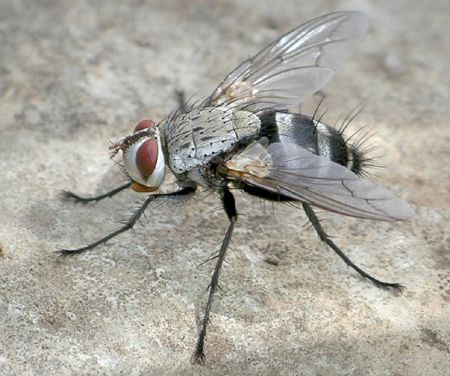by Valerie
July, 2018Tachinid Fly
The rather large insect shown above has no common name other than the label for the entire family. It is called a tachinid fly (Microphthalma disjuncta). The members of this whole taxon are parasitoids of other insects, as well as the occasional centipede or arachnid, with the maggots feasting internally on their victims before finally killing them. In the case of this species, the preferred hosts are scarab beetle larvae, or "white grubs." The adult flies are extremely active and require a steady diet of sugar; they are often seen during the day, nectaring at flowers. The females lay their eggs in the soil and the hatchling maggots must burrow to find their hosts. Once inside the body of a grub, the tachinid larva feeds on fatty tissue until just before it is mature, at which point it kills the beetle and subsequently pupates. Because of the damage to plant roots caused by scarab grubs, these flies are considered valuable for biological control of these beetles. Many tachinid flies have a preponderance of long setae on their bodies, especially at the rear of the abdomen, earning them the amusing yet descriptive colloquial name of "bristle-butts." |